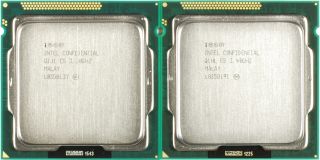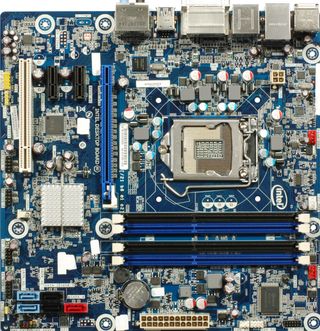Efficiency Comparison: Sandy Bridge Vs. Intel And AMD CPUs
The second-generation Core processors arrived with a bang, but what sort of progress can you expect in the performance per watt department? We compare Core i5/i7-2x00 to AMD's Phenom with four and six cores, as well as previous-gen parts from Intel.
Sandy Bridge Processor Overview
This article exclusively deals with desktop processors, as testing the mobile side is a bit more complex and requires more lead time. Since our initial launch article already covered the Sandy Bridge details, allow me to list the essentials that you might want to know more about.
Processors:
So far, there are only a few regular desktop CPUs, which are easy to memorize.
Core i3 is almost entirely out of the picture for most folks. It doesn’t support AES-NI, the encryption acceleration feature, and Core i3 does not support Turbo Boost. It can't be overclocked, and its on-die graphics are the anemic HD Graphics 2000 implementation. The Core i3-2100 runs at 2.93 GHz, and i3-2120 is a 3.3 GHz part. Both are dual-core models with Hyper-Threading, are rated at 65 W, and armed with just 3 MB of shared L3 cache. Core i5 is a much more compelling lineup.
All Core i5 CPUs have four physical cores (except for the poorly-named Core i5-2390T), 6 MB L3 cache, AES-NI, and Turbo Boost, making them the best choice for most users.
- Core i5-2300: 2.8 GHz (3.1 GHz Turbo Boost), 95 W
- Core i5-2400: 3.1 GHz (3.4 GHz Turbo Boost), 95 W
- Core i5-2500: 3.3 GHz (3.7 GHz Turbo Boost), 95 W
- Core i5-2500K: same as -2500, but multiplier unlocked for overclocking
Core i7 is very similar to Core i5, but has 8 MB L3 cache and eight threads/four cores.
There is just the Core i7-2600 at 3.4 GHz (3.8 GHz Turbo Boost) with a 95 W TDP. The K-series version is the unlocked one for multiplier-based overclocking.
Stay on the Cutting Edge
Join the experts who read Tom's Hardware for the inside track on enthusiast PC tech news — and have for over 25 years. We'll send breaking news and in-depth reviews of CPUs, GPUs, AI, maker hardware and more straight to your inbox.

Chipsets:
Intel has five 6-series desktop chipsets, B65, Q65, Q67, H67, and P67. B65 is a feature-limited small business platform, Q65 adds management, Q67 is the fully-featured business version, H67 supports Intel’s integrated HD Graphics core or one x16 PCIe graphics card, and you’ll want P67 for twin x8 PCIe-based dual-card graphics setups. H67 and P67 no longer support 32-bit PCI, though. We will follow up with motherboard roundups very soon.

H67-based solutions like Intel’s DH67BL are sufficient for mainstream users, but inadequate for gamers due to the single x16 PCI Express slot for graphics.
Recommendations:
Gamers are naturally going to be looking at P67 for its ability to support two graphics cards, along with processor overclocking (which isn't supported on H67). If you don’t care much about gaming, modeling, or anything else that is 3D-heavy, then you should stay with H67.
As we discovered yesterday, it's probably not necessary to go all-out on a CPU. Intel's Core i7-2600K is too expensive for what you get in excess of the Core i5-2500K. That's undoubtedly the more attractive option.
Current page: Sandy Bridge Processor Overview
Prev Page Energy-Efficient Performance Wanted Next Page Efficiency Features On-BoardMost Popular

